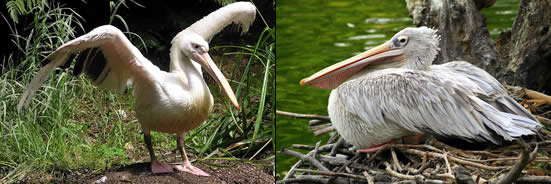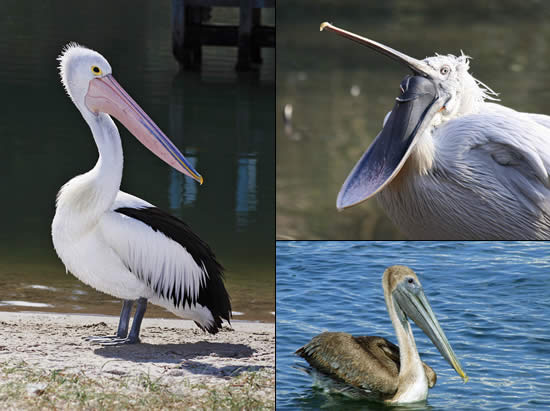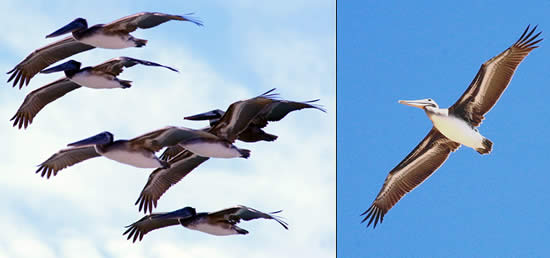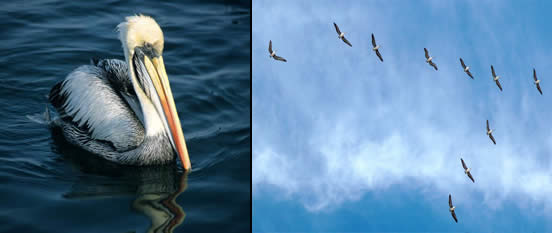|
|
|||
 |
|||
|
TATTOO DESIGNS & SYMBOLS - PELICAN TATTOOS
Tattoo Symbol Index - A B C D E F G H I J K L M N O P Q R S T U V W X Y Z Tattoo designs - P >> Pelicans Pelican Tattoos - The pelican is a spirit guide that teaches us about self-sacrifice. Getting a pelican tattoo is a statement that one yearns to be charitable and less competitive. It says, 'I am buoyant, able to rise above my troubles.'
The Pelican's symbolism grew over time to include self-sacrifice, devotedness, philanthropy, and the bounty of nature in general, from which all living things draw their sustenance. Christians take the good pelican a few steps further, granting it full status as a symbol of Jesus Christ the Redeemer, for giving his life and for the atonement he made through his passion and death.
The ancient society of mystics called the Rosicrucian's were sometimes called the Knights of the Pelican. Literary heavyweights through the ages have honoured the pelican. Dante, in his Divine Comedy, refers to Christ as 'our Pelican'. And Shakespeare did the bird proud in his Hamlet: "To his good friend thus wide, I'll open my arms / And, like the kind, life-rendering pelican / Repast them with my blood." A portrait of Queen Elizabeth I (1575) shows her with a pendant depicting a pelican, said to symbolize her selfless love of her subjects.
Big-beaked, broad-winged, flying low and in formation over the world's shorelines in search of fish, the Brown Pelican species can be seen plunging from high in the air to snag a fish under water. The other six pelican species can be found on inland lakes and rarely dive for their fish. Pelicans are gregarious and social creatures and breed in colonies. Pelicans will also hunt for food as a flock, and will co-operate to drive shoals of fish into shallow water where they can more easily be scooped up by a line of waiting pelican bills. The pelican's bill, with its elastic pouch is what most people often associate with the pelican, and a pelican with its bill stuffed to overflowing with fish has long been seen as a symbol of plenty. The Australian Pelican has the longest bill of any bird in the avian world. Small fish are swallowed whole, but larger fish are flipped into the air and swallowed head first, the better to slide down the gullet.
Despite its large size and inelegant shape, the pelican is an extremely efficient flyer and is able to easily fly distances of up to a 100 miles (160 kilometers) in search of food by skimming along the shoreline in large, V-shaped formations to take advantage of onshore breezes and naturally-occurring air thermals.
Pelicans have long congregated around ports and fishing fleets in search of an easy meal. Fisherman have long considered the pelican a fellow fisher, and the association with Jesus Christ as a fisher of men's soul, has served to further strengthen the pelican as a Christian symbol in many cultures, especially around the Mediterranean. The sight of a flock of pelicans hovering above the rear deck of a fishing boat as it returns to port is a familiar one all over the world. As the fishers clean their catch and discard the offal and leftovers, the pelicans make short work of the remains.
While most birds incubate their young by keeping them close to the breast, the pelican protects her eggs under her webbed feet. She's basically standing on them, and if they're cracking more often in modern times, it's because DDT is rendering the shells thinner and more susceptible.
Get inspired by some really great images and photos in our Pelican Inspiration Gallery See also: Bird Tattoo Index, Pirate Tattoos Tattoo designs - P >> Pelicans Tattoo Symbol Index - A B C D E F G H I J K L M N O P Q R S T U V W X Y Z |
||
| Celeb Tattoos | Facts & Stats | Designs & Symbols | History | Culture | Links | Tattoo Galleries | Contact | |||
|
|
|||











